Choosing Home Real Estate
by Estim20, HSM team writer
What makes a personal space worth a purchase?
Chances are you asked yourself that question either before you decided for or against making said purchase, or after you realized (if you’re like me) you passed fifty spaces. In effect, we are asking ourselves if we would actually buy something like this. Answering that question is no simple task, made less simple by the fact plenty lack open house previews. The open house previews that do occur are extremely beneficial, so long as you’re available to view it during the window of time it remains on Home.
For those who are new and logged in for the first time well after open houses for older spaces disappeared, they’re between a rock and hard place. It makes sense open houses are rotational. They are to advertise new spaces after all, and spaces aren’t the most recent after the first week usually, but it does provide one more obstacle for the intrepid purchaser. How are they going to judge whether a space is one they find pertinent to their tastes without a tour? HCV tours settle this by and large, as does finding friends and getting them to agree to show a space in case one is interested.
Ultimately, however such tours are offered, the judging may commence and we pose the very question prefacing this article: what are we looking for when we make our ultimate decision? What do we visualize when we see ‘the perfect space?’ What features fascinate us the most? Can one aspect be the deciding factor for one space and overshadowed in another? How are we deciding this anyway?
I asked those questions to myself when I looked over my spaces list. Which ones did I prefer and why? How would I recommend them to someone? Which features would I play up and others ignore? Which ones would convince me to avoid the space had I had the opportunity to mulligan?
My brain then came up with a short list of what I consider important features for picking a space. When you are about to purchase a space, be sure to mentally face yourself and ask which of the following attracts you to the space and not repulse you. You need to worry about various things, after all, when making the decision, things such as:
Price
Let’s face it: when deciding to purchase something, how much it costs is going to be important.
Most of us aren’t millionaires, even if we play one on Home, so money needs to be taken sensitively. For those that require paying bills to maintain electricity, running water and cable, we can’t always spend what we earn on frivolities. We may not see enough money after the next paycheck to even know what $20 looks like, let alone how much fun it’s worth. When you’re living from paycheck to paycheck especially, you aren’t necessarily jonesing to saddle up into Home and drain what remains into a nice suit for your avatar and a robot dog to keep him company.
So when we are willing and able to spend a little cash on Home, we’re going to spend it wisely. Naturally this will have to be tied to what one considers a value given the costs involved and that will require knowing what it can offer based on the rest of this list. Still, when money’s really tight you may not be looking at the higher-end properties even if you consider them a value.
As such, you may subconsciously favor the cheaper prices over others. Personal spaces range from $4.99 to $14.99 depending on what’s available in each space. You hope developers offered these prices with due understanding for what they’re giving you and for the most part they are. Properties such as the LOOT Space Station won’t be in the bargain bin due to all the bells and whistles, while others, such as Wizard’s Den, can justify a cheaper price thanks to it being more or less a place to put furniture.
It’s a trend that’s trustworthy enough that you can figure out which ones will be more complicated. Hey, is that a $9.99 Dream Yacht? It must be huge and offer something extra. Is that mage’s abode $4.99? It must be more practical-minded.
You can gauge pretty much every estate’s complexity by price and hit the mark generally well. This falls apart slightly when you work in the permanently-free spaces, such as the Level 100 reward in Aurora or the Batcave, however – much like free companions, sometimes you luck out and earn a really nice personal space that’s mind-boggingly free. Still, it works well enough even then, such that you can still rely on the price train of thought.
Aesthetics
Subjectivity is a lovely thing. One man’s preference is another man’s ipecac.
Aesthetics are a great example to illustrate what this means for the average consumer. They call them personal spaces for a reason: they’re personal and you can dictate who to invite (up to the limit anyhow). If you aren’t allowed to decide which one you are willing to buy, what’s the point of having a personal space to get away from it all?
What will factor into an aesthetic decision? Sometimes the right architecture, mood or art style is enough to sway you into buying a space. Ever wanted to stare distantly into the night sky over a calm lake? There are spaces that offer that experience. Love the sound of waterfalls? There’s something for that as well.
Perhaps you enjoyed a particular game or movie’s art direction. Assuming Home possesses the relevant space, you can buy a space for that specific game. For example, with the release of TRON’s sequel arrived the game version of it. For Home users this also meant relevant costumes and, for purposes related to this article, a personal space, capturing the styles of TRONS in all its neon, other-world glory.
For gamers, you may also snag a piece of gaming real estate. Enjoyed the dieselpunk underwater charms of Rapture, brought to you by Bioshock? You can purchase a personal estate nestled somewhere in the city’s confines, free for you to decorate. That you get free music catering to 1950s pop culture is a nice touch.
These aren’t the only visuals one can prefer obviously, but it does present a significant message either way. The beauty of Home in its current state is that it’s only adding to the variety of personal space design. Personal spaces need diversity as that will increase the chances of finding one for your personal tastes. As such, as there are mansions and lake houses, there are alien spacecraft and underwater domes. Even if a particular theme hasn’t been explored yet, it’s potentially only a matter of time before they design it.
Of course, any reasonable cross section of estates points out that for every estate you may actually see in real life as it is on Home (e.g. The Playground or Assassin’s Creed II’s Italian mansion), there are others that seem a few degrees from that (Gothic Mansion) or flatout improbable to see outside a theme park (Loco Roco, Silicon Lounge). Again, this only confirms what Home is best for. We can buy spaces that are either far out of our budget or simply not possible to buy, even if you earned a paycheck in the billions each year.
The major point for all this is one that is only natural to assume, not to mention one that heartily explains any diversity present: everyone has their own ideas as to what space is the most appealing visually. No two users will spend their money on Home the same way, even if their spending habits overlap to a significant degree.
Think about what art styles interested you the most. If art styles aren’t immediately jumping to mind, think about what interests you in other areas, like culture or gaming. There may just be something similar, if not outright exact, to what you just imagined. You may be surprised what’s being offered so far – and even if what you’re looking for doesn’t exist yet, it likely will before long.
Space and Ability to Decorate
Some people see clothing as their works of art, the apogee of self-expression. Others see machinima as this instead. Others see decorating a personal space as their chance to shine.
There is no lack of decoraters and furniture barons, seeing an empty personal space as their canvas. They buy furniture as often as they buy new spaces to place them in, if not more so, minds aflutter with ideas. The very concept of an unused personal space is antithetical to their drive. They simply cannot leave one blank.
It helps explain the parallel increase of furniture alongside the increase of personal spaces. Plenty of personal spaces are coupled with themed furniture, often in bundles, designed especially for them. If you need to check, go ahead. Pick any personal space and then check the furniture store. How many do you see with their own furniture line?
Naturally furniture may be placed in any personal space, not just the ones they were originally designed for. While theme furniture ideally fits in with the space their tied with, they can work quite well in other spaces, one’s tastes serving as a guide. With the increased item limit especially, this means people may get creative and personalize their estates without restricting themselves to the spaces’ specific furniture bundles. The only limits to how one decorates are space, item limit and imagination.
Oh, yes, space. There’s a reason I hadn’t separated space from decorating ability when creating this category: the two are tightly linked. Perhaps the least surprising element to consider when purchasing a space is that they come in a variety of sizes. This is perhaps where open houses serve a vital function: you may be surprised exactly how varied sizes may get.
As a matter of perspective: The smallest space at the time of this writing is the complimentary hotel room offered by the Paradise Springs Casino. It may not be surprising that it’s small but it may still shock you how tiny it actually is. It’s a matchbook with furniture cramed in and virtually no room left to decorate. If you reach maximum occupancy for a personal space in here, you’ll be lucky if people aren’t touching each other. You’ll be more afraid you’ll hit the walls before worrying about how to use the space.
On the other side of the scale, you have spaces such as Silicon Lounge. Calling it ‘large’ is an understatement. It’s quite possible ten people enter this space and have two groups of equal size be out of sight of each other. The issues of decorating this space are opposite that of the hotel room: you wonder if you can reasonably fill the space with the 100 item limit. It may just take it close to the furniture limit to feel like everything’s close enough together.
Whatever the size of a space, there are multiple reasons to take space and decorating capacity into account. When taking space into consideration for decorating purposes, how much is there to work with, as illustrated above? How long would it take you to move furniture around? How many spawn points are available to ease the former point? Can you work around the spawn points in case you want to move them outside where they initially spawn and not glitch it?
Not that these are the only concerns. Some spaces either provide furniture you can’t remove/exchange for others (the Mansion) or limit certain sections of the space to furniture they provide (Bonk – the lower part of the hut uses furniture you find in the space). While both types don’t forbid decorating with furniture you bought, their built-in furniture options will restrict the available space. This causes issues similar with the complimentary hotel if it’s the former but a little creative can provide interesting personalization.
Interactivity and Entertainment
So you mulled over price, art direction and the amount of space, alongside how easy it is to decorate said space. Whether or not the space is looking entrancing as a result, there is more to consider before making the ultimate decision.
Personal spaces always existed as a home for furniture and a chance to host guests. We don’t get the chance to decorate and invite friends for nothing. This has remained true since the halcyon days of Home where we could buy maybe two personal spaces. Back then, of course, we were lucky if personal spaces came with anything extra.
What makes the current state of affairs interesting is how much we now expect to see extra features included ‘for free’ or for a reasonable increase in price. What constitutes ‘reasonable’ is subjective, as mentioned when discussing price, but the point remains. These days, it takes far more to impress the crowd. We seen what Home is capable of, and the future’s bright. We see more and now we want more because we think Home can handle it.
It’s all due to progress that took us from closed beta to the Hub replacing its plaza predecessor. Home is almost unrecognizable in certain aspects thanks to the changes made since 2008 minimum. We witnessed features we never knew were in the works prior: companions, arcade games, EOD TVs (with a placeable version in the works). We’re accepting the fact that the program’s quite versatile and showing no signs of weakening yet.
What this means for personal spaces in the long run is a general expectation of more than the opportunity to play decorator or invite friends; every space does that. It would be notable if one didn’t (or, as is the case with the hotel room, comes close). Home isn’t showing any signs of slowing down its pace of innovation, so it is contributing to that sense of ‘more, more.’ It’s something that permeates everything from Home exclusive games to free rewards (just ask how many people want a t-shirt instead of a companion).
For what this means for the general consumer, this contributes to a sense of what we think a personal space ‘should be.’ Should a personal space be a gathering place for friends? Should it be a gambling lounge, a bit like the poker rooms but for friends only? Should it be a gaming room, with built-in and placeable games?
Of course to decide on what a personal space should be, one needs to know what it could be – and this often means showing what it can do. To that end, numerous spaces now offer interactive elements as a means of showcasing their versatility, with all manners of rewards to wet your freebie appetite (more on that later). It’s quite dramatic how much Home offers now when you compared how it used to be. Whereas they were simply places to hang out before, personal spaces are now capable of being game spaces, movie centers or party central depending on what one needs them to be.
Take a look at the selection available now if you need further convincing. There’s an entire store now dedicated to game ‘furniture,’ some spaces (such as the Mansion and TRON) come equipped with games baked into them and 2011 gave us EOD TV spaces courtesty of LOOT. LOOT even provided us with two spaces for the machinima artist inside us all, with functional cameras, green screen and a stage for the set designer to do his work.
LocoIsland provides a free mini-game where you pick nuts in exchange for fruit that could be exchanged to unlock furniture in-space or purchase clothing in the LocoRoco public space. The Bonk space allows owners to search the provided lake for furniture useful in the space. Waterfall Terrace enterains the fisherman we tuck away out of fear fish turn vicious and bite fingers.
There are plenty more but the end result’s the same: Home provides spaces that offer more entertainment for your buck than what once held true. Our perceptions of what it takes to be a valuable personal space are thus skewed. Is a personal space worth purchasing if nothing is interactive in it? Is it worth the higher price hurdle if it does? Are the interactive elements that fun to play, price aside? Can friends play them as well or is it owner-exclusive?
These questions must be tackled before purchase rather than after, especially alongside the rest. How much value do you place on being able to play in the space beyond being there? Which specific experiences are most valuable to you? Machinima developers may place more on their craft, for example, than being able to play poker (and vice versa for poker players). Also, know which ones you may be willing to play with others in the case of games – as well which ones are actually multiplayer as opposed to single player and how many people may play simultaneously regardless.
This holds true for non-gaming examples, such as the EOD TV. Do you see yourself having parties on a regular enough basis or perhaps watching movies? The fact movies and music are free (purchasing the space notwithstanding) is decidedly for the spaces’ benefit.
Rewards
If you read the interactive section and wondered why I passed over rewards, this is why: it is a factor unto itself.
We know how rewards work; it’s Home’s bread-and-butter after giving us items to purchase. Rewards are free items given at different events and spaces and are based on what they are associated with. The quest board is a prime example these days, as is the community theater – the quest or video usually gives you clear indication what you’re getting, or at least what you do receive is no surprise. Getting a Chinese dragon for Chinese New Year or a Homecast beach chair for watching an episode of Homecast are only logical.
The same is true for personal spaces and for those that offer at least one, you generally see three flavors of receiving rewards. Sometimes you earn a reward for simply entering the space (Necronomiopedia, courtesy of everyone’s favorite Cutteridge Estate). Sometimes you earn it by playing a game in the space (Cutteridge appears here again with its candle-lighting game, as does LocoIsland with its nut pursuit). Otherwise you can give them to friends via a rewards board built into the space (as is the case with the Mansion, Creek Falls or the Gothic Mansion). One variation on the first and/or second requires that you be the owner of the spaces (look at the Dream Yacht).
As such, you’ll need to think about a few factors before deciding if this process is worth it. How many rewards does the space offer? Some, like the Dream Yacht, offer quite a bit (if conditional: guests get 7 while owners earn 20) while others, such as the Gothic Mansion or Creek Falls, offer one. Are the rewards available for anyone, for the owner alone or can users receive a limited amount of items as compared to owners? There are examples for all three: in order, we have the Cutteridge Estate, Bonk space, and Dream Yacht.
Which items entice you the most if free? Do you prefer clothing or furniture? How about a free space, such as the underwater apartment from VEEMEE’s fishing game space? Do you prefer giving rewards out to friends or would you rather show off what you got? Would you rather get them as easily as possible or do you feel attracted to earning them via a game? You won’t be at a lost if you answer any of the questions any multitude of ways.
Where It All Comes Together (i.e. A-Team Moment)
So, you read the list, you thought them over and you want to know: how do all these come together in a solid moment of decision-making? You can’t expect anyone to think of these independently of the others, you may be asking me. It’s only fair that they are considered together in a evaluating whole.
Indeed it is only fair. Let’s make a hypothetical example to show how this may work. An imaginary person, named Jed for the sake of providing him a name, has found the Estates store and knows he has enough money for one personal space – any personal space at any price, but enough for just the one. Jed needs to make an important decision now that he knows he’ll be buying one.
Jed has concluded the following: he is a fan of tropical or aquatic (i.e. yacht, ocean) getaways and something he may find in real life if he can help it, though if it’s generally aesthetically pleasing he may concede with something out of the ordinary. He much prefers to have space to decorate so that it won’t feel empty and, you know, like the place is actually lived in. He won’t likely concede on this point.
Interactivity is a nice bonus and he will be swayed by such a feature if he was given a choice between a ‘vanilla’ yacht or a yacht with a working TV, as an example, which he so totally would share with friends. Rewards are the same way: he would thoroughly enjoy giving rewards as well as having a few given unto him, even if there’s a disparity between what he gets and what others get. He much prefers none such disparity exists however, though it’s not as big a deal.
For the price: he knows he won’t get that for free, even if he wants it dearly to be free. As such, his ‘dream price’ is $4.99 but he knows he won’t get that either, so he’s willing to go up to $9.99 if that means everything works and fits his preferences overall. At $9.99 he better find interactive elements – especially the TV – and if it can be helped, rewards will be nice.
As you may imagine, Jed would likely walk away with the Sunset Yacht, if not the Dream Yacht. In all honesty, he could fall either way, but the interactive element probably makes him pick the former.
This is but one example and there are numerous means of picking a space. Pick one that’s best for you and your needs, as hypo-Jed-ical here accomplished. You likely won’t place the same weight on certain factors as other people and that’s to be expected; you’re in control so let it be about what you wish to have. Hopefully this list will provide some important questions to consider and help you figure out which personal space is the best fit.


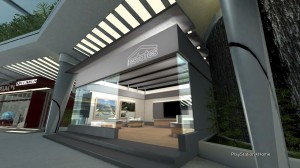

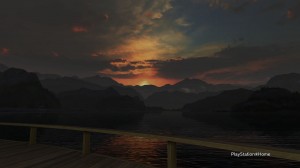
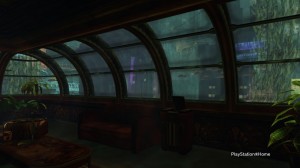

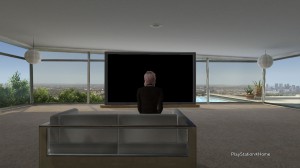

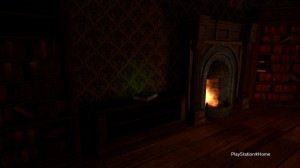


Great article Estim. You made a lot of valid points. I for one am going to be very picky from here on out before I buy any more spaces. I have enough now that I don’t get to visit that at this point I don’t really se the sense in getting more unless they are spectacular in some way. For me, especially lately, Home has become more of a place to talk to my friends and colleagues and work on my writing and helping others in videos. I don’t need anymore spaces.
I do love to decorate though as you know, and each space I see is my empty canvas. That is my main decision maker, if I can’t walk in and think of how I would decorate it, I won’t buy it.
I only purchase spaces now that I view from a videographer perspective-I will but it if I see potential in the realm of machinima making. I almost never soend time in any of my personal spaces minus my Harbor Studio wardrobe changing space..STOP SPAWNING US IN THE HUB>>>>>>>>>>PLEASE…..WTHelghast..
stupid typos….blame the chocolate flavored vodka….
I have alot of personal spaces, even though they although in most cases they dont get used, I see potential for a artistic expression in them. For the most part that is why I bought them. How much does the universe cost?
I love the private places I have bought. My only regrets are the freebie homes, although I did do a fun job of filling my complimentary casino room with 100 items that drew a comment from a visitor. “It looks like ‘The Hangover 3′ in here”, as it was littered with pizza boxes and Red Bull cans, food in odd places and a computer in the tub!I choose the homes based on the concept of what can I do to decorate it. The size is not an issue. I own both the LOOT space station and Final Fantasy- Primarch’s Vigilarium, and love them both, as they both offer such distinct aspects. Both are filled with 100 items. The Vigilarium is decorated in a “Blade Runner” sort of clutter, as the Space Station is bigger and allows for more walking space between items. My priority can also be a passing fancy . Some homes like the Japanese apartment were bought for the serene style, as Tron was bought out of boredom, and Santorini was bought because it was cheap. So there are such differences as to why I would buy any particular home. One thing remains true: the more that developers show they care to make good places, the more likely I will be to buy. With recent additions of the technology like the EOD and Flikr/ Twitter, this shows that the developers are really thinking outside the box or home as it were. May I add a “by the way”? I do not like freebie homes if they are presented like the one I got from the “Darla’s Den”.That felt like a shill that I will never pay for. In order to get to parts of the ‘space’ I need to buy addditional content,the key. No other place that I know of does this. Loco private island has games that allow the owner to open up more parts, but it’s included in the price and is a game, meaning fun for the owner. Note to UFC: fix the public space’s reward machine or then the luster of doing the games in the private home is lost. All in all the private places are great, and they are fun, now if we could just get our hands on a few that I have seen in Japan and Europe that would really make my collection.
For me it’s the vibe. That unexplainable thing that makes a space feel like home. For example I love the hum of the air conditioner unit in the Eden Primarch Vigilarum space, and the birds sound in the Tropical Escape space. These little touches really go a long way.